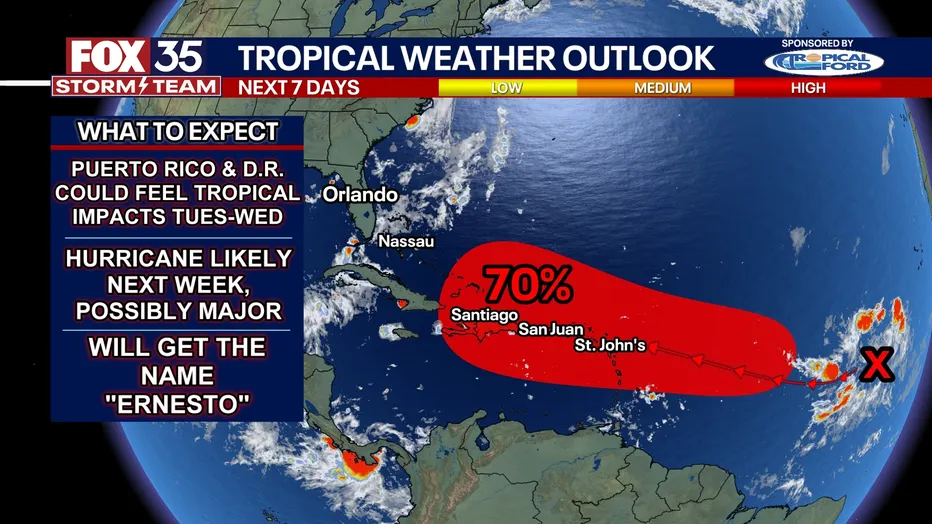Introduction
As a tropical wave moves through the Atlantic, weather experts closely monitor its potential to intensify into a tropical storm this week. These waves, often the precursors to significant weather events, can bring heavy rain and strong winds to coastal areas, posing serious threats to communities in their path. Understanding the development of tropical storms is crucial for those living in vulnerable regions, especially during hurricane season. Staying updated with storm forecasts and preparing in advance can make a significant difference in minimizing the risks associated with these natural phenomena.
What Is a Tropical Wave?
A tropical wave is a type of atmospheric disturbance that occurs in tropical regions. It typically travels from east to west across the Atlantic, forming low-pressure areas that can later develop into more severe weather systems. These waves are the earliest stages of storm formation and are often the starting point for a tropical depression or tropical storm.
Tropical waves are common in the Atlantic during the hurricane season, which runs from June to November. The warm waters and atmospheric conditions during this period create the perfect environment for these systems to intensify. Past examples, such as Hurricane Katrina, started as tropical waves before evolving into devastating storms.
How a Tropical Wave Can Develop into a Tropical Storm
The process of a tropical wave evolving into a tropical storm involves several stages:
- Tropical disturbance: The initial stage with unorganized thunderstorms.
- Tropical depression: When the system shows signs of organization and has wind speeds up to 38 mph.
- Tropical storm: The system is named when wind speeds reach 39-73 mph.
- Hurricane: When the storm strengthens further, with winds exceeding 74 mph.
For a tropical storm to form, specific conditions need to be met:
- Warm sea surface temperatures (above 80°F).
- Low wind shear, which allows the storm to grow vertically.
- Ample atmospheric moisture to fuel the storm.
The current tropical wave being monitored has the potential to meet these conditions, making it important to stay alert as meteorologists track its development. According to the National Hurricane Center (NOAA), this wave is currently showing signs of intensification and could turn into a named storm by the end of the week.
Potential Impacts of a Tropical Storm
If the tropical wave strengthens into a tropical storm, it could bring a range of hazardous conditions, including:
- Heavy rainfall, leading to flash flooding in low-lying areas.
- Strong winds, capable of causing widespread power outages and structural damage.
- Coastal flooding and storm surges, which can inundate coastal regions with seawater.
The long-term impacts of such storms can be significant, with potential damage to homes, infrastructure, and local economies. It’s essential for those in at-risk areas to monitor storm forecasts and take early precautions. The current storm track suggests that parts of the southeastern U.S. and the Caribbean could be affected, though the path may change as the storm develops.
Storm Preparedness Tips
It’s never too early to start preparing for a potential tropical storm. Here are some key steps you can take:
- Before the Storm Hits:
- Assemble an emergency kit with essentials like food, water, medication, flashlights, and batteries.
- Protect your home by securing windows, reinforcing doors, and trimming trees.
- Plan an evacuation route in case authorities recommend leaving your area.
- During the Storm:
- Stay indoors, away from windows, and in a safe part of your home.
- Monitor weather updates through trusted sources like the NOAA and local news stations.
- Avoid using electrical appliances, and stay away from floodwaters.
- After the Storm:
- Be cautious when stepping outside, as there may be debris, downed power lines, or standing water.
- Contact local authorities if you need assistance or encounter severe damage.
How Tropical Waves and Storms Relate to Climate Change
The increasing frequency and intensity of tropical storms have been linked to climate change. Warmer ocean temperatures, which fuel tropical storms and hurricanes, are a direct result of global warming. Additionally, the changing atmospheric patterns lead to shifts in storm tracks, making it harder to predict where these storms will make landfall.
According to data from the Intergovernmental Panel on Climate Change (IPCC), extreme weather events, including stronger hurricanes, are becoming more common as the planet warms. It is more important than ever for communities to be prepared, especially as the impacts of climate change continue to influence storm behavior.
How to Stay Updated
Staying informed during hurricane season is essential for safety. Here are some ways to ensure you receive timely updates:
- Real-time data from reliable sources: Websites like NOAA and the National Hurricane Center provide the latest forecasts and storm advisories.
- Weather apps: Tools like AccuWeather and the NOAA Weather App offer real-time alerts, storm tracking, and safety tips.
- Local alerts: Sign up for local government or community alert systems to receive notifications on evacuation orders and road closures.
- Social media: Platforms like Twitter can provide quick updates, but be sure to verify information from official weather accounts.
Conclusion
As this tropical wave continues to develop, it’s crucial for those in coastal and storm-prone regions to stay informed and prepared. Understanding how a tropical wave can evolve into a tropical storm, and taking the right steps toward storm preparedness, can significantly reduce risks. Keep an eye on storm forecasts, follow expert advice, and ensure you’re ready to protect yourself and your family. Natural disasters can be unpredictable, but with the right information, we can all be better prepared.
